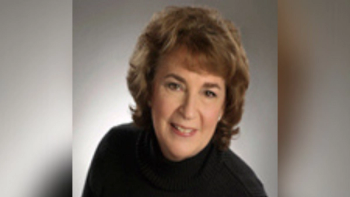
Clinical Trial Site Training in The Era of COVID
JoAnne Schaberick, Co-CEO of Pro-ficiency, discusses how their simulation training platform is helping provide remote clinical trial site training to sponsors and study sites.
COVID-19 showed us that relying on face-to-face training is not only expensive, inconsistent, and slow; It is also fragile. The industry needs systems that utilize the rigor, convenience, durability, and financial benefit of virtual technology without sacrificing effectiveness. In this interview, JoAnne Schaberick, Co-CEO of Pro-ficiency, discusses how their simulation training platform is helping provide remote clinical trial site training, compliance, and communication tools to sponsors and study sites.
Moe Alsumidaie: Could you share a little bit about your history and background?
JoAnne Schaberick: My partner Dave Hadden and I have been building simulation-based training for healthcare for over 15 years. Our previous company, TheraSim, was the first to introduce AI-based simulation training for clinical medicine and CME. After WebMD acquired that company, we looked for other areas in the healthcare space where a similar approach would provide significant benefit. What we discovered was surprising, if not shocking. We immediately recognized that despite the increasing complexity of clinical trials, there had not been any significant change in methods being used to help clinical researchers manage increasingly complex protocols. Researchers were still being trained using PowerPoint slides, lectures, and rudimentary e-learning. Thus, Pro-ficiency was started with the mission of changing the study startup and performance management paradigm. Utilizing simulations, our goal is to move training from an exercise of 'checking the box' to one of improving performance and mitigating risk.
MA: By virtual training during startup, are you talking about doing remote virtual meetings, or are you preparing self-administered training?
JS: It's actually the latter. The idea is to train people in environments that look and feel like their practice settings. To accomplish this, we create scenarios that walk researchers through critical decision points, along with the life of a study. This could be subject selection, assessments, washout periods, mitigating placebo response-all of the interactions that impact study success. Throughout these scenarios, we follow each decision to determine individual and aggregate understanding of critical aspects of the protocol. This allows us to identify knowledge-based risks, even before a single SIV is conducted. This path also reinforces optimal behaviors while correcting for the non-optimal ones.
Sites very well received our approach; as a result, Sponsors began asking us to apply it to other required training, including GCP, Pharmacovigilance, and investigational medical products. This required sophisticated and comprehensive compliance tools. So, although we started with a unique approach to protocol training, over the last five years, we've expanded our platform to become a comprehensive portal to deploy better, manage and track all study training. Our purpose is to ensure we're mitigating risk in studies while ensuring compliance is smooth and precise.
MA: When we're looking at that, how is your platform better than an investigator meeting, for instance?
JS: Even before COVID-19, it could be challenging to get attendance at investigator meetings (IMs) because, as incredibly busy people, researchers often simply don't have the time. The logistics of gathering everybody into a centralized location can be cumbersome and costly. Replacing those larger meetings with online training has benefits from both a cost and time perspective.
IMs also often employ lectures and PowerPoints as the core means for communicating study specific materials. Our simulation approach is engaging because it replicates the real-world environment. This is how doctors and surgeons were trained in medical school, and the way those in other high-risk occupations, such as aviation, are trained. There's a reason this approach is the gold standard in training. We work with Sponsors and CROs to develop scenarios that are highly realistic and track the most critical, and sometimes confusing, aspects of a study.
In the traditional IM, regardless of the quality of the content, there is little data captured to determine the impact. As investigators go through a series of presentations, the hope is that everyone understands all of the nuanced information being presented. With online simulation, gaps in understanding are quickly identified so they can be mitigated before the study starts.
MA: So, tell me a bit about your model and how that works with staff turnover at sites.
JS: Staff turnover has recently been reported to be as high as 30%. As such, it's simply not feasible for a monitor to quickly conduct face to face training every time there is a change in staff, particularly for large international studies. CRA and monitor time is expensive, and it's limited, so even before COVID-19 forces us to rethink everything, there was always the risk that new staff and sites would fall behind, which creates a compliance risk. With a web-based platform like ours, all of those training activities are available the moment a change occurs. Best of all, it ensures consistency of content and the ongoing application of measures designed to determine risks.
MA: In terms of the platform and the technology, could you tell me a bit about the risks you are identifying right now? Which areas are being identified?
JS: It's very much protocol dependent. However, we're frequently identifying risks related to complex screening criteria, amendment management, complex dosing in protocols, and escalation procedures. Another frequent gap appears when sites are engaged in multiple studies on the same compound. When sites engage in various protocols, they may be predisposed to apply the 'rules' from a previous protocol. For example, if 80% of the protocols a site is engaged in have a washout period of 3 weeks, there is a human response to apply that same rule to the other 20% as well. The instinctive thought would be it's the same compound, so the washout period is going to be the same. Those small changes tend to be places where we're identifying gaps.
We also found the process of developing simulations tends to identify areas of confusion in the protocol itself, even before the training is created. To create simulations truly reflective of practice, we go through a rigorous process, essentially a reverse-engineering of the protocol to break it down into its salient parts. Through that process, we often come across confusing language in the protocol. For example, a protocol might say to screen out positive drug tests with no exception in one place and then say those false positives are an exception in another place. We can identify these discrepancies early, allowing Sponsors and partners to clarify the language before costly amendments are necessary.
MA: How do Sponsors go and identify areas of risk?
JS: We offer real-time analytics on user-friendly dashboards, not just certificates of study completion. These dashboards are shared with all assigned stakeholders, including the study team, monitors, and CRAs, and can be accessed 24x7. Our dashboards are designed to highlight performance gaps at a very granular level while still being user friendly. Our proprietary data visualization tools, such as heat maps, further ensure that risks are quickly and easily identified and can be mitigated before they occur in the study. Study teams are bombarded with data coming from many different sources, so too often, data gets lost in the noise. The key to ensuring data is useful is to make it identifiable and actionable from the start.
Moe Alsumidaie, MBA, MSF, is a thought leader and expert in the application of business analytics toward clinical trials, and Editorial Advisory Board member for and regular contributor to Applied Clinical Trials.
Newsletter
Stay current in clinical research with Applied Clinical Trials, providing expert insights, regulatory updates, and practical strategies for successful clinical trial design and execution.






.png)



.png)



.png)
.png)
